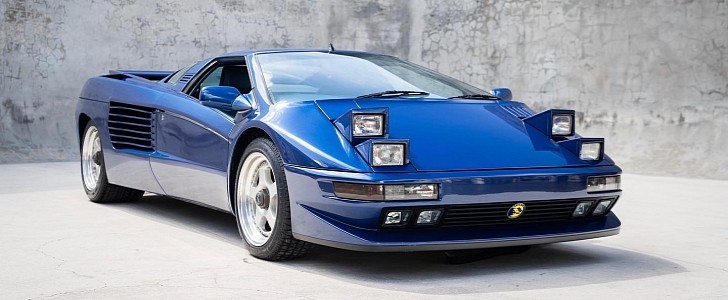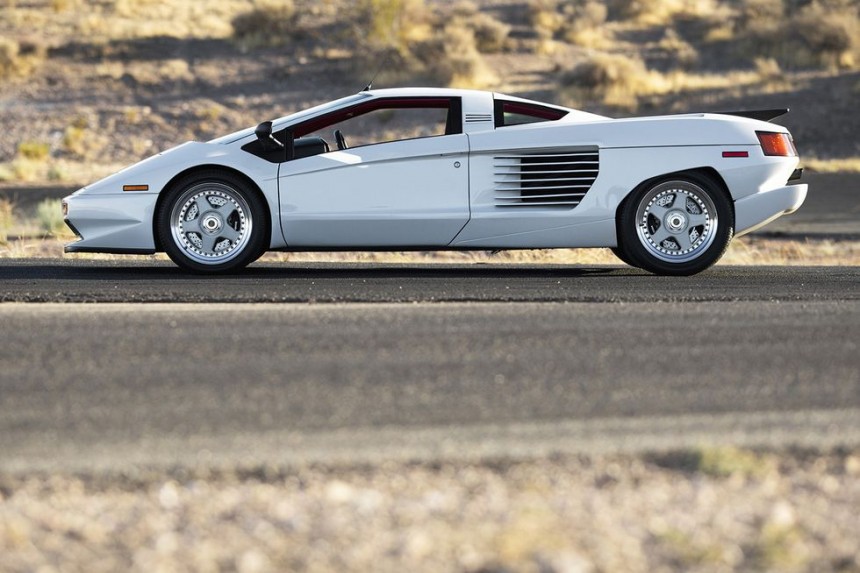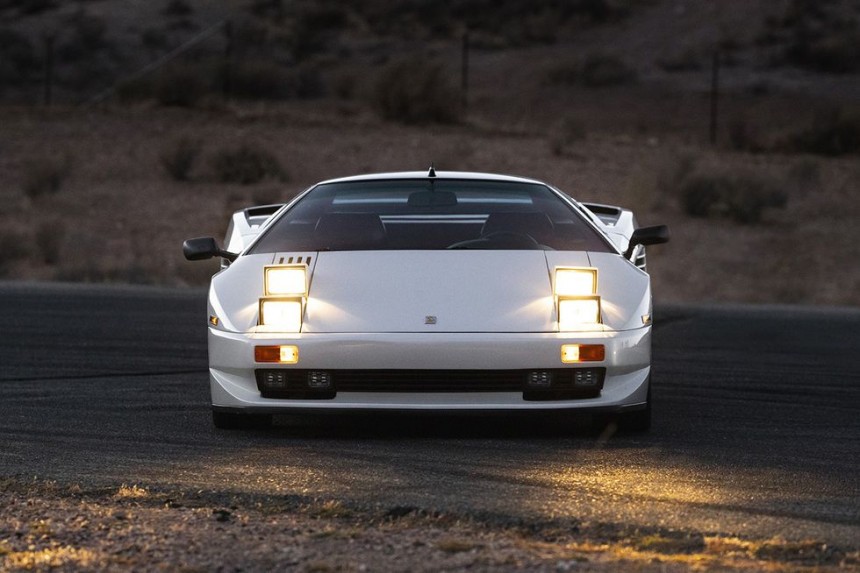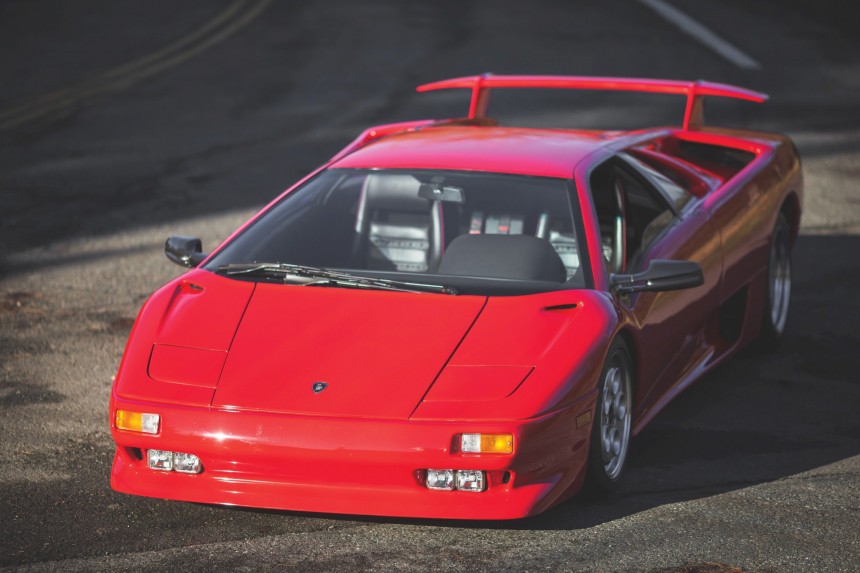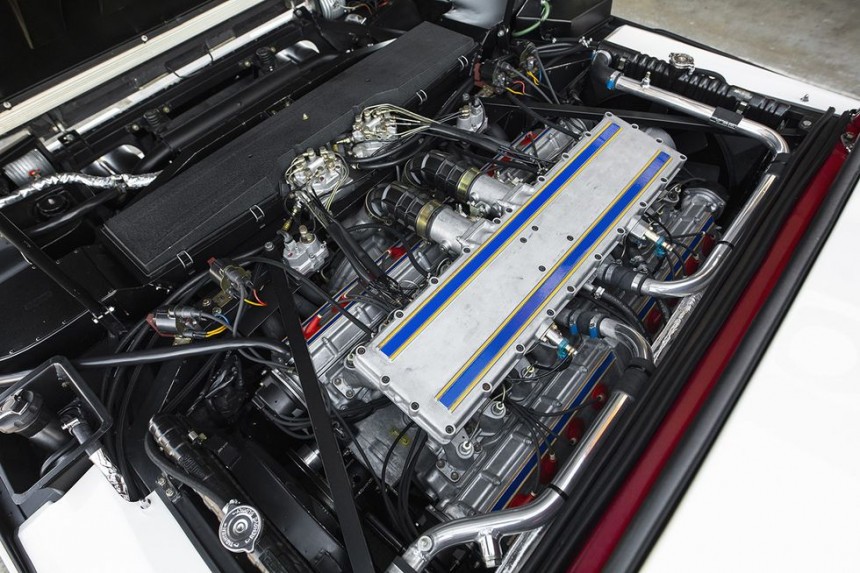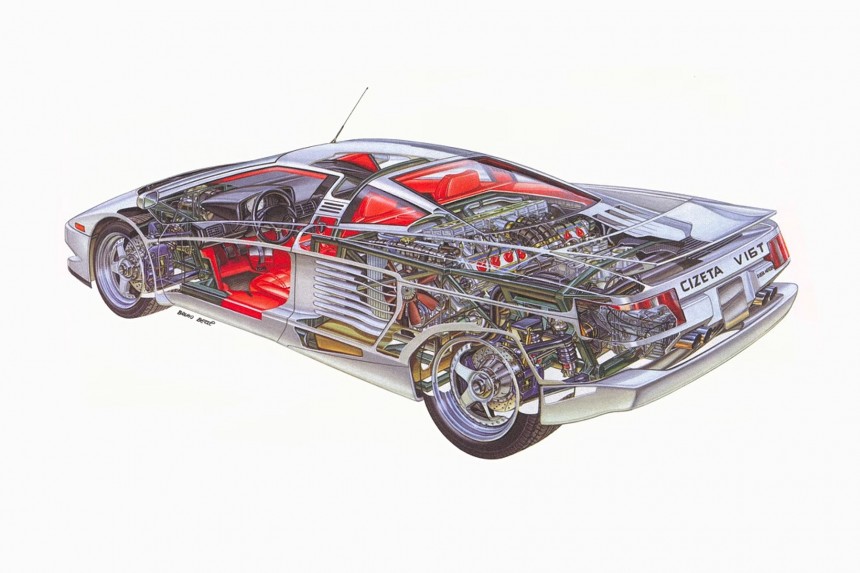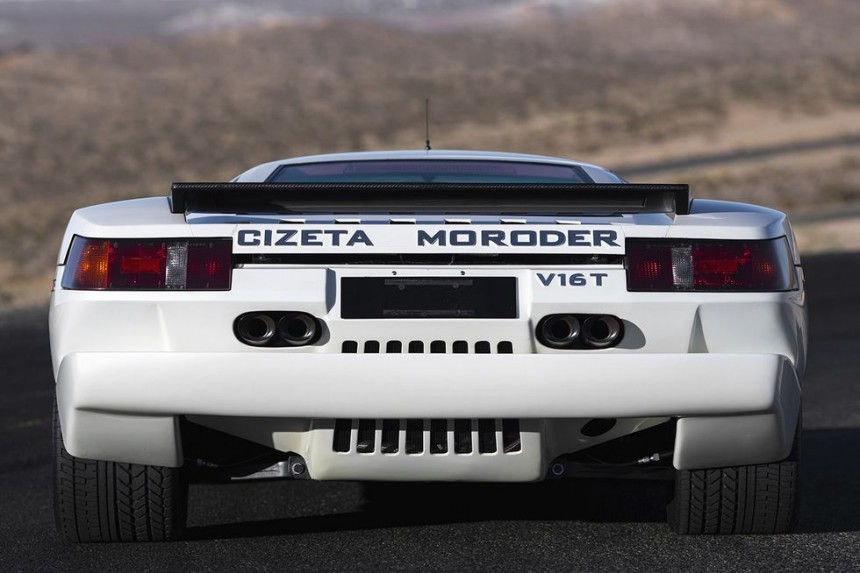Ferrari and Lamborghini are undeniably the most iconic supercar brands hailing from Italy. But the country that gave us the 250 GTO and the Countach was also home to a bunch of small companies that built almost anonymous yet stunning supercars. Iso and Bizzarrini are the first that come to mind, but Cizeta is worth mentioning too.
Much like Iso and Bizzarrini, Cizeta-Moroder was established by engineers who had worked at Ferrari and Lamborghini. But unlike the small ventures that built the Grifo and the 5300 GT in the 1960s, Cizeta, which surfaced in the 1980s, rolled out a supercar that was originally designed to be a Lamborghini.
Meet the Cizeta V16T, the Lamborghini Diablo before it was diluted by Chrysler.
A music composer, Moroder had become famous for writing the soundtracks for the "Scarface" and "American Gigolo" films, as well as the official theme songs for the 1984 and 1988 Olympics, and the 1990 FIFA World Cup. He reportedly agreed to finance the V16T when he brought his Lamborghini into Zampolli's workshop.
But the collaboration was short-lived. Moroder and Zampolli parted ways in 1990, shortly after the first prototype was created. As a result, the first car is the only one sporting a Cizeta-Moroder badge. The following units were simply labeled the Cizeta V16T.
With the Countach growing old and out of style in the 1980s, after more than 10 years in production, Lamborghini put Gandini in charge of designing a replacement. The final design came to life in 1987 as a sleek, wedge-shaped body with an unusually long rear deck and big gills into the rear fenders.
But while the head honchos at Lamborghini liked the design, the folks over at Chrysler Corporation, which had just acquired the Italian firm, deemed it far too extreme for the American market. The sketches were sent to Tom Gale at the Chrysler Styling Center and the design was watered down to the Lamborghini Diablo we know today. Needless to say, the decision left Gandini enraged.
Unhappy with his own design for the V16T, Zampolli immediately adopted Gandini's outlandish idea for the Diablo, save for minor changes needed to accommodate Cizeta's larger V16 engine.
While very similar to the Lambo Diablo from the nose to the B-pillars, the V16T looked far more radical. It was fitted with quad pop-up headlamps, a never-before-seen design on a production model, and rear fenders that became increasingly wider toward the rear, a feature that reminded of the Ferrari Testarossa.
The long rear deck featured a larger, integrated spoiler, while the rear fascia introduced rectangular, wrap-around taillights at a time when round lights were still a thing on supercars.
The mill was designed as two V8s, each based on the architecture of the flat-plane crank engine found in the Lamborghini Urraco. The V8s shared the same block and synchronized their separate cams and crankshafts via two timing chains.
Fitting the transverse 6.0-liter V16 (that's where the T in V16T comes from) behind the seats was quite the hassle. And in order to accommodate the ZF-sourced, five-speed transaxle, the engine was tilted 10 degrees forward. And while the body was made from aluminum, the engine was placed in a steel frame welded by hand.
Capable of revving up to 8,000 rpm, the V16 generated a whopping 540 horsepower. Far from impressive in 2021 when many supercars crank out more than 1,000 horses, but when it made its public debut in late 1988, the V16T was the most powerful car in the world. For reference, the turbocharged Porsche 959 and Ferrari F40 came with "only" 444 and 471 horsepower on tap, respectively.
The V6 enabled the Cizeta to hit 60 mph (97 kph) from a standing start in a little over four seconds, to go with a top speed of 204 mph (328 kph), both impressive figures at the time.
Due to its hand-built nature, the V16T took a couple of years to start rolling off the assembly line, with the first examples ready in 1991. By 1994, Zampolli had finished nine of the 14 pre-ordered cars and that's when things came to an abrupt end. Without Moroder's cash flow, Zampolli ran out of money and the company went into bankruptcy in late 1994.
Two more cars were put together after Zampolli moved the company to Los Angeles in 1995. The tenth coupe was finished in 1999, while a spyder variant was assembled in 2003.
Zampolli continued to service exotic cars in his California-based shop for many years. He died on July 7, 2021, aged 82.
To this day, the Cizeta V16T remains one of the rarest, most elusive, and outlandish supercars ever built. All thanks to the Chrysler Corporation, which rejected Gandini's initial design proposal. Funny how things work out, right?
Meet the Cizeta V16T, the Lamborghini Diablo before it was diluted by Chrysler.
The brainchild of an ex-Lamborghini engineer
Cizeta Automobili was set up in 1988 in Modena, Italy, by Claudio Zampolli. An ex-Lamborghini engineer, Zampolli decided to fulfill his life-long ambition to create his very own supercar. But while he had the expertise, Zampolli needed an investor to fund the costly project. And this is where Giorgio Moroder came into play.But the collaboration was short-lived. Moroder and Zampolli parted ways in 1990, shortly after the first prototype was created. As a result, the first car is the only one sporting a Cizeta-Moroder badge. The following units were simply labeled the Cizeta V16T.
Gandini's wildest design since the Alfa Romeo Carabo
The V16T was penned by Marcello Gandini, the man who took the automotive world by storm with the Alfa Romeo Carabo in the late 1960s. An extremely angular, wedge-shaped concept, the Carabo is often credited to having started the wedge car design craze. The Carabo also inspired the Lamborghini Countach and pioneered the scissor doors.But while the head honchos at Lamborghini liked the design, the folks over at Chrysler Corporation, which had just acquired the Italian firm, deemed it far too extreme for the American market. The sketches were sent to Tom Gale at the Chrysler Styling Center and the design was watered down to the Lamborghini Diablo we know today. Needless to say, the decision left Gandini enraged.
Unhappy with his own design for the V16T, Zampolli immediately adopted Gandini's outlandish idea for the Diablo, save for minor changes needed to accommodate Cizeta's larger V16 engine.
The long rear deck featured a larger, integrated spoiler, while the rear fascia introduced rectangular, wrap-around taillights at a time when round lights were still a thing on supercars.
The V16 monster under the hood
As a former Lamborghini employee and Ferrari dealer, Zampolli knew that the Cizeta needed more than an outlandish design to stand out in a world packed with state-of-the-art supercars. So he decided to take it up a notch in the drivetrain department by skipping V8 and V12 layouts in favor of a V16.Fitting the transverse 6.0-liter V16 (that's where the T in V16T comes from) behind the seats was quite the hassle. And in order to accommodate the ZF-sourced, five-speed transaxle, the engine was tilted 10 degrees forward. And while the body was made from aluminum, the engine was placed in a steel frame welded by hand.
Capable of revving up to 8,000 rpm, the V16 generated a whopping 540 horsepower. Far from impressive in 2021 when many supercars crank out more than 1,000 horses, but when it made its public debut in late 1988, the V16T was the most powerful car in the world. For reference, the turbocharged Porsche 959 and Ferrari F40 came with "only" 444 and 471 horsepower on tap, respectively.
Initial success and bankruptcy
Despite a massively expensive sticker of $300,000 (twice what a Lamborghini Diablo cost upon release), Cizeta received 14 orders for the V16T, all backed by $100,000 deposits.Due to its hand-built nature, the V16T took a couple of years to start rolling off the assembly line, with the first examples ready in 1991. By 1994, Zampolli had finished nine of the 14 pre-ordered cars and that's when things came to an abrupt end. Without Moroder's cash flow, Zampolli ran out of money and the company went into bankruptcy in late 1994.
Zampolli continued to service exotic cars in his California-based shop for many years. He died on July 7, 2021, aged 82.
To this day, the Cizeta V16T remains one of the rarest, most elusive, and outlandish supercars ever built. All thanks to the Chrysler Corporation, which rejected Gandini's initial design proposal. Funny how things work out, right?
